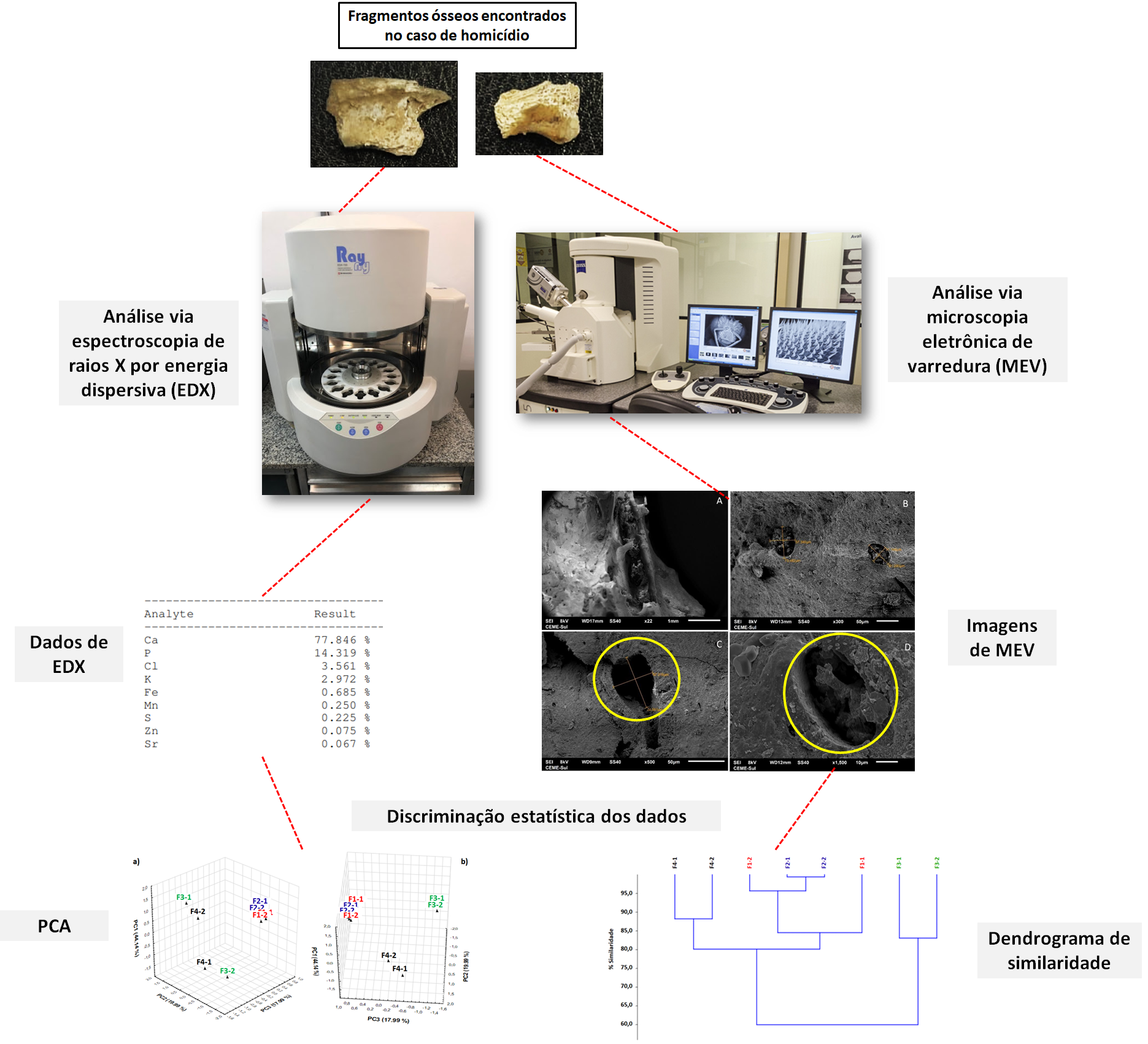ANÁLISE DE FRAGMENTOS CARBONIZADOS DE UM CASO DE HOMICÍDIO EM DOM FELICIANO, RIO GRANDE DO SUL
DOI:
https://doi.org/10.36524/ric.v9i3.2209Keywords:
fósforo, Canais de Haver, morfologia, caracterização química, ossosAbstract
Ashes and related materials, such as artifacts, metal fragments and bones found at crime scenes, can constitute important evidence to elucidate criminal investigations. When subjected to various analyses, these materials can provide an association between a person or an object to a crime scene. The objective of this work was to evaluate solid fragments found in the ashes recovered from a crime scene that occurred in the municipality of Dom Feliciano, State of Rio Grande do Sul, Southern Brazil. Energy dispersive X-ray spectroscopy (EDX) and scanning electron microscopy (SEM) were performed to evaluate the chemical compositions of the solid fragments present in the ashes and to investigate the morphology of those most similar to bone fragments, in order to obtain a evidence in a homicide case. The results revealed that the elemental semi-quantitative composition of the solid fragments was successfully correlated with bone materials containing P and Ca as main elements. Subsequently, it was possible to associate the bone fragments with the human body, based on the morphological details obtained by SEM mainly due to the diameter of Haver's canals, which tend to be larger compared to the same canals found in other mammals. Therefore, the EDX and SEM analyzes allowed a robust description of the material studied through detailed and clear inferences about its origin, allowing to elucidate the events linked to the homicide case, and thus creating a body of evidence in the criminal case.

Downloads
Published
Issue
Section
License
Copyright (c) 2023 Revista Ifes Ciência

This work is licensed under a Creative Commons Attribution-NonCommercial-NoDerivatives 4.0 International License.
Autores que publicam nesta revista concordam com os seguintes termos:
- Autores mantém os direitos autorais e concedem à revista o direito de primeira publicação, com o trabalho simultaneamente licenciado sob a Licença Creative Commons Attribution que permite o compartilhamento do trabalho com reconhecimento da autoria e publicação inicial nesta revista.
b. Autores têm permissão e são estimulados a publicar e distribuir seu trabalho online (ex.: em repositórios institucionais ou na sua página pessoal) a qualquer ponto antes ou durante o processo editorial, já que isso pode gerar alterações produtivas, bem como aumentar o impacto e a citação do trabalho publicado (Veja O Efeito do Acesso Livre).


